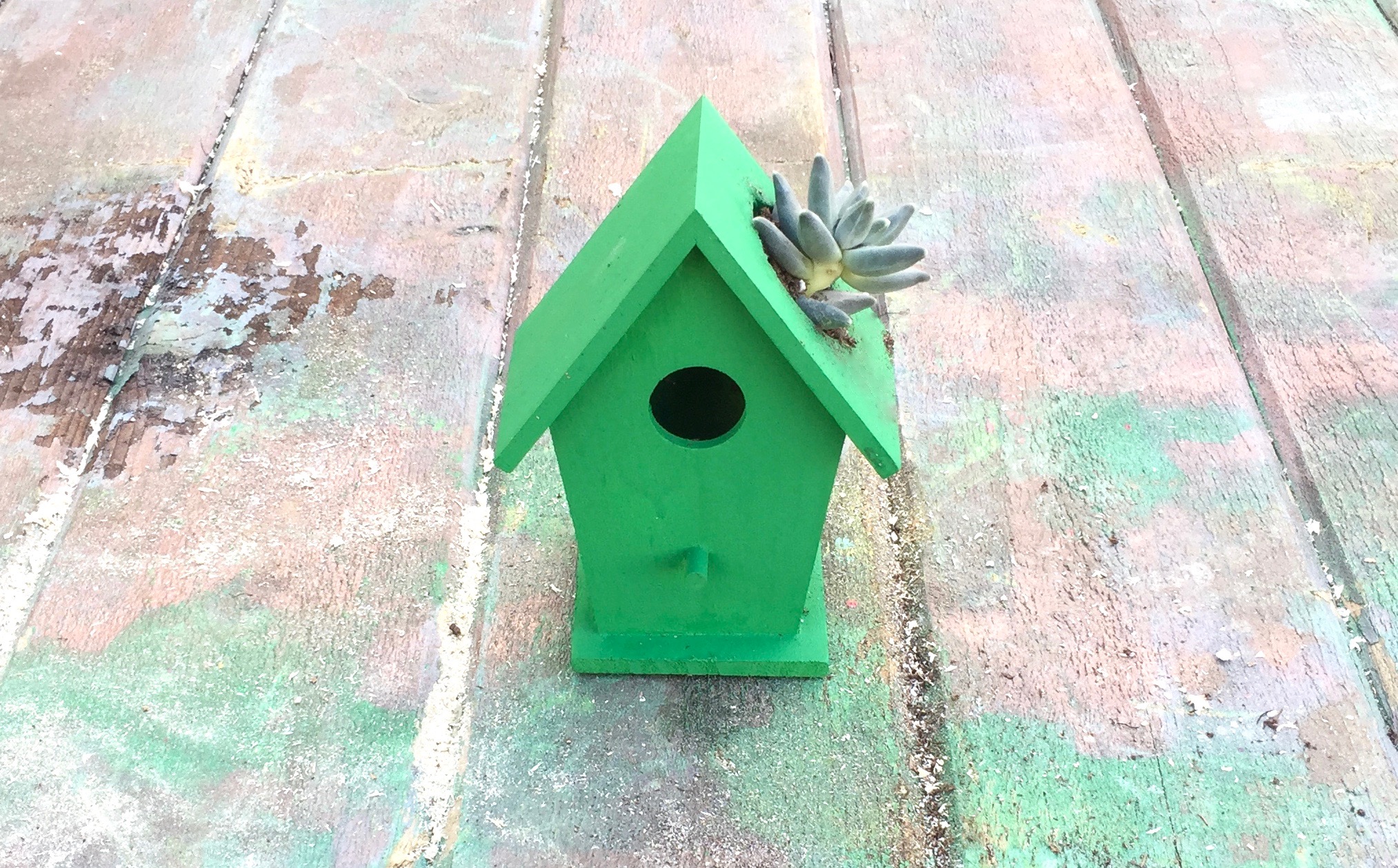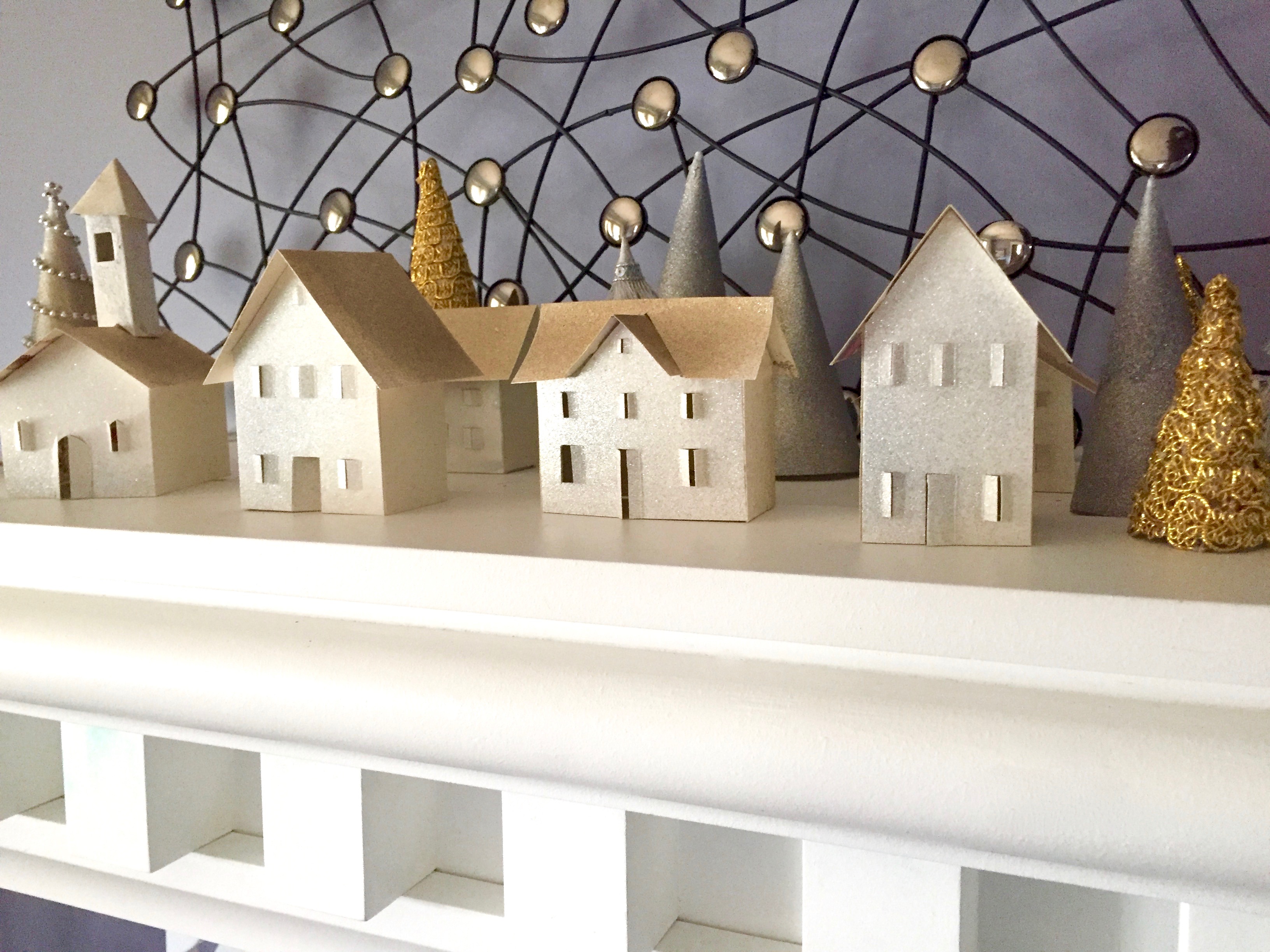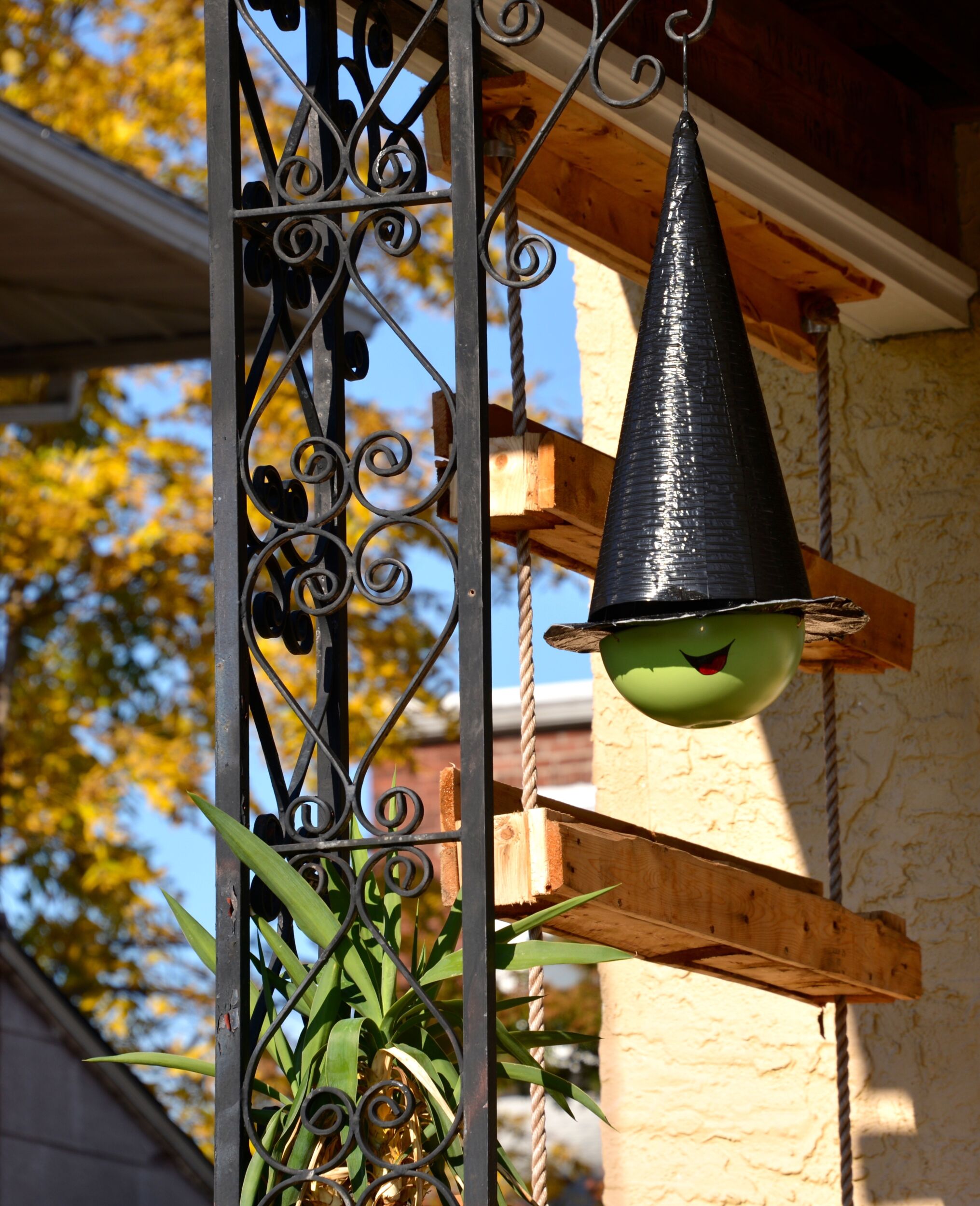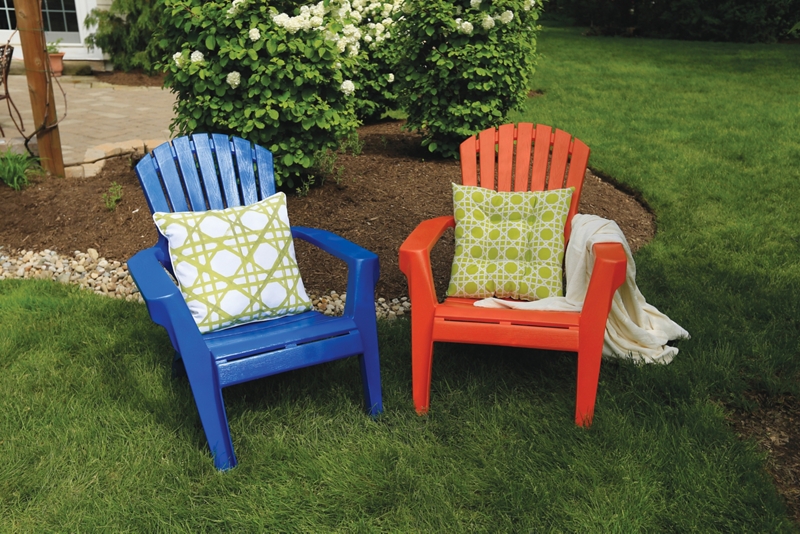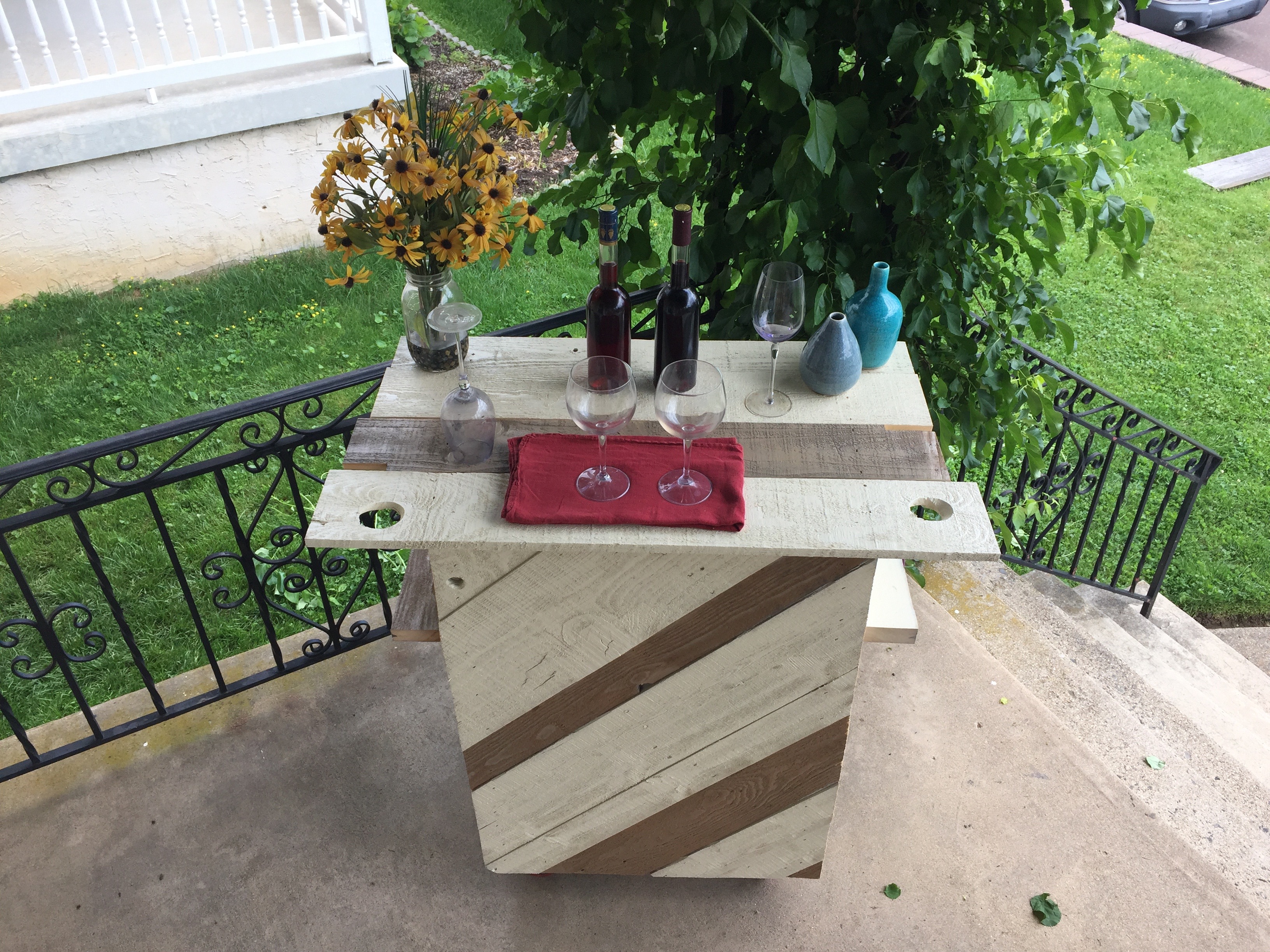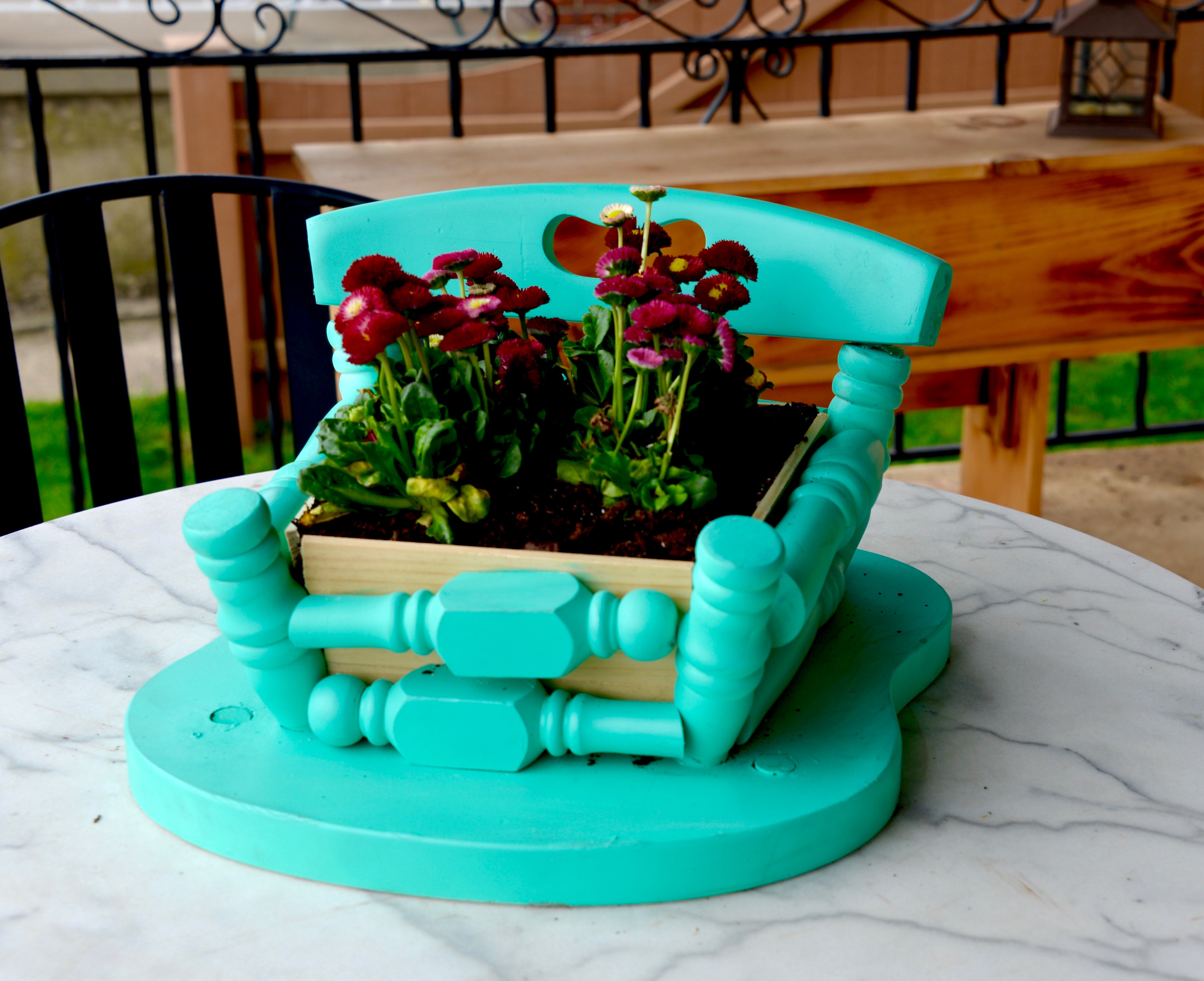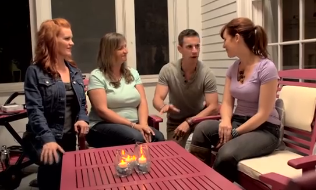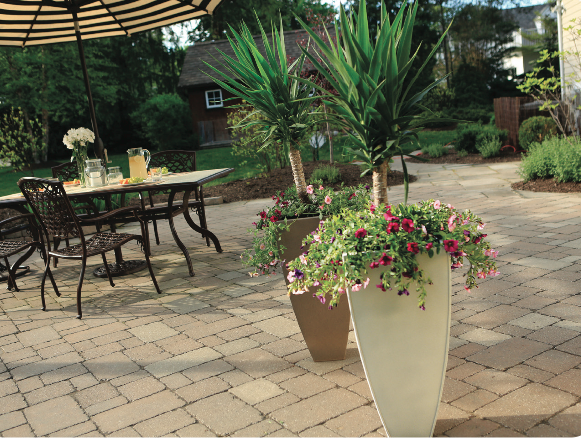Painting plastic furniture is an easy way to update your backyard oasis.
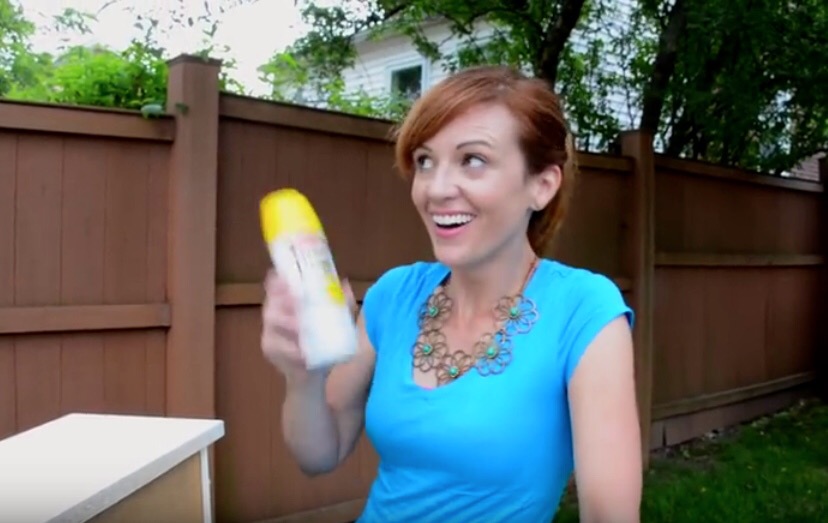
You may want to reach for a bucket of paint to refresh plastic furniture, but if you want it to have that factory-finish look in just an afternoon, you’ll resist that urge.
Spray paint is the easiest, least time-consuming, and best guarantee for a smooth finish. Your friends will think you bought those chairs in turquoise, instead of whatever color you ‘settled’ on.
Whenever we’re working on a new project, I like to try to minimize the ‘oh-no’ experiences by learning from other experts. So here are a few tips we’ve learned the hard way, and from our spray-painting expert friends.
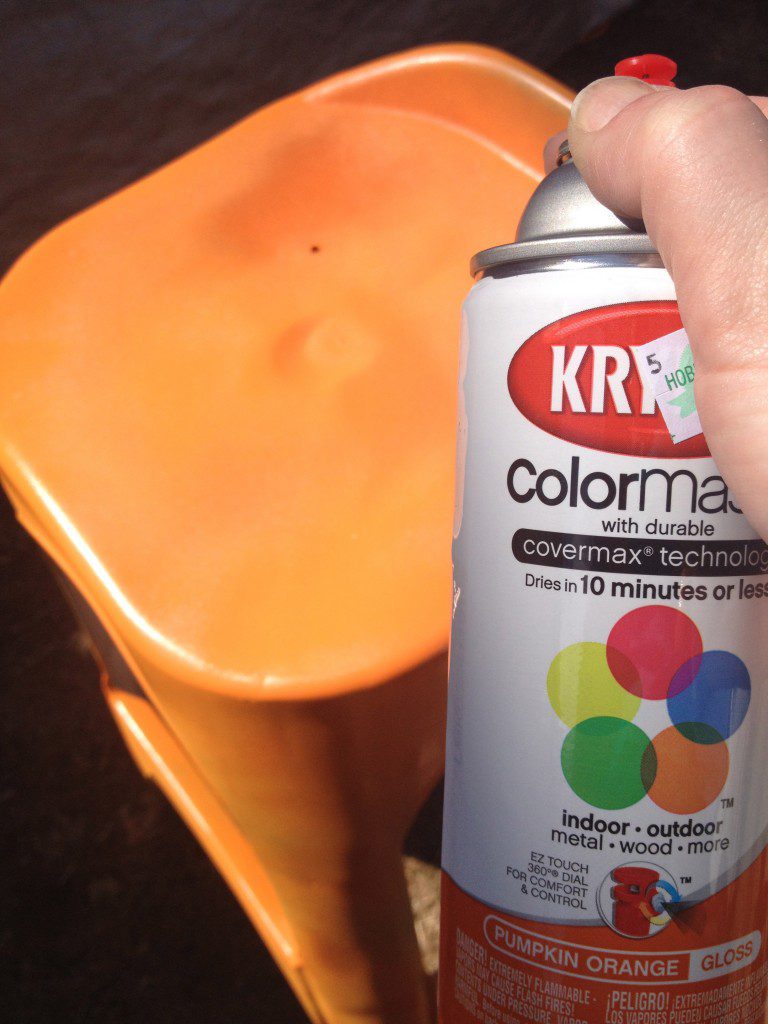
Spray painting prep tips.
- Look for a spray paint that is designed to coat plastic. If you have something small to paint, and are planning to use the same color for a few other small projects, it wouldn’t be terrible to use a ‘multi-surface’ spray paint (like the paint shown above). But, usually I say go for the paint specifically designed for plastic. Plastic is slick and can be difficult for some formulas to bond to.
- Read the directions. I know it’s boring, and the font is like 3 pt on the can, but learning about dry times, and recoat times is essential before you get started. I think it’s a common DIY trap to get started on a project in the shop, backyard, or garage and then have to move it before it’s done. It’s the ‘moving around’ that can cause imperfections in the finish. Your friends might not notice it, but you will.
- If it’s new plastic furniture, do this. Older plastic furniture that’s been standing up to Mother Nature, is naturally worn and roughed-up a bit. But new plastic can be very slick. To extra-insure that your plastic-specific spray paint adheres beautifully, use an ammonia-based cleaner or a paint thinner to wipe down the surface.
Spray painting how-to tips.
- Work in a ventilated, yet protected area. Ok, so these might sound like opposites, but they aren’t. Don’t close the garage door or work in a sealed room when working with spray paint. Not only will it affect you, your family might start worrying ‘what’s that smell?’ But don’t just put the plastic chairs on the lawn. Put them on a flat surface that can be painted without regrets like a big piece of cardboard. And make sure there’s a covering overhead. If you’ve never tried to get little pieces of nature out of an otherwise perfect paint job, you can avoid lots of that heartache by using a pop-up canopy.
- Shake it, and then shake it some more. One of the biggest mistakes in spray painting is not shaking the can long enough. Think of it as a mini-workout. I like to shake the can with my non-preferred hand, so it gets a little surprise muscle workout.
- Use sweeping, light coats of spray paint. Don’t try to rush the painting job. If you aren’t a spray paint veteran, you’ll quickly become one if you adopt the slow-and-steady mantra. Start the spray off the work, and then sweep slowly back and forth across the surface. It won’t look right, yet, but trust the process. Slowness helps avoid drips, bubbles, and other gooey messes that turn a project from looking professional to amateur. Wait the recommended amount of time, and then sweep back and forth keeping the nozzle about 8 to 12 inches away from the surface you are painting.
- Blow out the paint in the nozzle. Say what? If your spray paint can isn’t empty, turn it upside-down and spray it away from you. This cleans out the nozzle, so it will be ready to use next time.
The good news is that you’ll have little bursts of time to check Instagram and text friends during the dry times. And if you’re feeling impatient, remember, you can always add more, but removing hastily sprayed drips and runs is really no fun.




